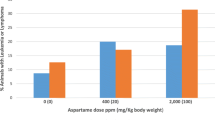Abstract
Recently, in two separate studies we have observed cadmium (Cd)-induction of prostatic tumors (PT) in rats. Cd (sc or im) at doses nontoxic to the testes markedly increased PT formation (2.5 μmol/kg, sc, 8 PT/29 exposed, 28%; 30 μmol/kg, im, 11/26, 42%; control 14/127, 11%). The administration of zinc (Zn; 1 mmol/kg, sc, at −6, 0 and +18 h) to prevent testicular toxicity and tumors from Cd (30 μmol/kg, sc, 0 h) also resulted in an elevated incidence of PT (8/27, 30%). The nature of the metal-binding proteins in the prostate has not been defined, although metallothionein (MT), a low Mr Cd-binding protein that confers tolerance to Cd, is deficient in other target tissues of Cd carcinogenesis, such as the rat testes. Using a technique that extracts MT from liver, a low-Mr Cd-binding protein was extracted from both ventral (VP) and dorsal prostate (DP) and isolated by gel filtration. In contrast to the two forms of rat MT, reverse phase HPLC of VP and DP extract eluted 1 and 5 forms, respectively. The amino acid compositions of the VP and DP proteins were quite distinct from MT, with much less cys than MT and the presence of residues not found in MT (leu, tyr, phe). Thus Cd-induction of PT appears to be dependent on functional testes and, as is the case with Cd-induced testicular formation, appears to be associated with a deficiency of MT.
Similar content being viewed by others
References
S. Takenaka, H. Oldiges, H. Konig, D. Hochrainer and G. Oberdorster,J.N.C.I. 70, 367 (1983).
S. A. Gunn, T. C. Gould, and W. A. D. Anderson,J.N.C.I. 31, 745 (1963).
S. A. Gunn, T. C. Gould, and W. A. D. Anderson,Proc. Soc. Exp. Biol. Med. 115, 653 (1964).
M. P. Waalkes, S. Rehm, C. W. Riggs, R. M. Bare, D. E. Devor, L. A. Poirier, M. L. Wenk, J. R. Henneman, and M. S. Balaschak,Cancer Res. 48, 4656 (1988).
M. P. Waalkes, S. Rehm, C. W. Riggs, R. M. Bare, D. E. Devor, L. A. Poirier, M. L. Wenk, and J. R. Henneman,Cancer Res. (1989), in press.
W. D. Flanders,Prostate 5, 621 (1984).
M. D. Kipling band J. A. H. Waterhouse,Lancet i:730 (1976).
G. Bako, E. S. O. Smith, J. Hanson, and R. Dewar,Can. J. Public Health 73, 92 (1982).
C.-G. Elinder, T. Kjellstrom, C. Hogstedt, K. Anderson, and G. Spång,Br. J. Ind. Med. 42, 651 (1985).
R. A. Lemen, J. S. Lee, J. K. Wagoner, and H. P. Blejer,Ann. NY Acad. Sci. 271, 273 (1976).
M. P. Waalkes, S. B. Chernoff, and C. D. Klaassen,Biochem. J. 220, 811 (1984).
M. P. Waalkes, S. B. Chernoff, and C. D. Klaassen,Biochem. J. 220, 819 (1984).
J. T. Deagen and P. D. Whanger,Biochem. J. 231, 279 (1985).
M. P. Waalkes and A. P. Perantoni,J. Biol. Chem. 261, 13079 (1986).
M. P. Waalkes, A. P. Perantoni, M. R. Bhave, and S. Rehm,Toxicol. Appl. Pharmacol. 93, 47 (1988).
M. P. Waalkes and A. P. Perantoni,Toxicol. Appl. Pharmacol., submitted.
S. Klauser, J. H. R. Kagi, and K. J. Wilson,Biochem. J. 209, 71 (1983).
J. W. Laskey, G. L. Rehnberg, S. C. Laws, and J. F. Hein,Toxicol. Appl. Pharmacol. 73, 250 (1984).
E. A. Zyber-Haran, H. Gershman, E. Rosenmann, and I. M. Spitz,J. Endocrinol. 92, 123 (1982).
O. J. Lucis, R. Lucis, and K. Aterman,Oncology 26, 53 (1972).
S. A. Gunn, T. C. Gould, and W. A. D. Anderson,J. N. C. I. 35, 329 (1965).
D. S. Coffey and J. T. Issacs,Urology 3 [Suppl], 17 (1981).
P. Z. Sobocinski, W. J. Canterbury, C. A. Mapes, and R. E. Dinterman,Am. J. Physiol. 234, E399 (1978).
Author information
Authors and Affiliations
Rights and permissions
About this article
Cite this article
Walkes, M.P., Perantoni, A. & Rehm, S. Tissue susceptibility factors in cadmium carcinogenesis. Biol Trace Elem Res 21, 483–490 (1989). https://doi.org/10.1007/BF02917292
Received:
Accepted:
Issue Date:
DOI: https://doi.org/10.1007/BF02917292




